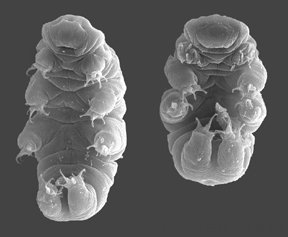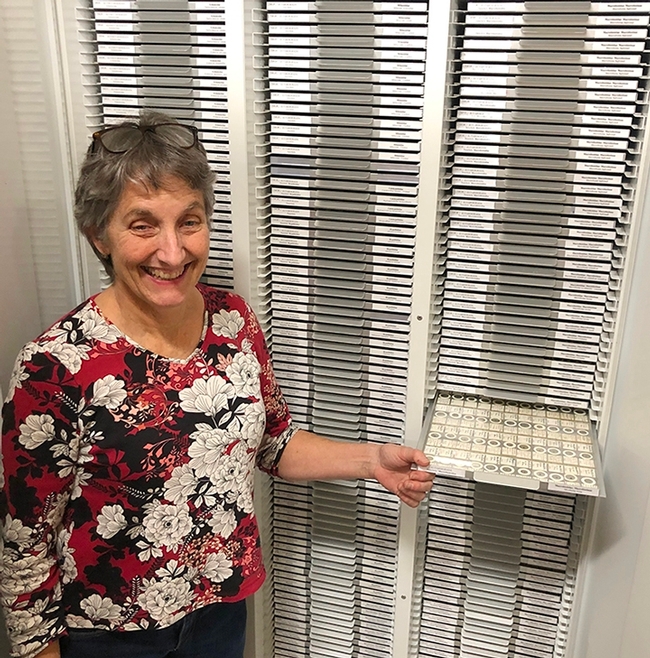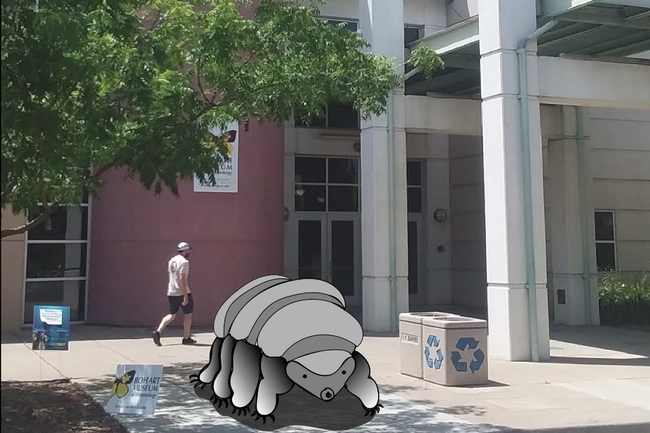
The National Science Foundation (NSF) has awarded a three-year collaborative research grant to five faculty members at Baker University, Baldwin City, Kansas, and to Lynn Kimsey, director of the Bohart Museum and professor, UC Davis Department of Entomology and Nematology.
All the tardigrades collected by Baker University's faculty and students will find a new home at the Bohart.
“Our part in all this is to act as a repository for all of the specimens collected,” Kimsey said. “We have one of the four largest collections of tardigrades in the world.”
The NSF awarded $256,849 for the project, titled “Cross Departmental Development of an Automated Species Identification System for the Phylum Tardigrada Found on Birds.” Collaborating with Kimsey are Baker University faculty members Scott Kimball, associate professor of biology; Randy Miller, director of research; Robert Schukei, assistant professor of computer science; Mahmoud Al-Kofahi, professor of physics; and Irene Unger, associate professor of biology and director of the Baker Wetlands.
"We thought we had a great project and were thrilled the award committee agreed to fund the full scope of our project," Kimball said in a press release. “Our group will engineer an automated process of preparing microscope slides of tardigrade specimens collected from any of several sources. The second objective is to design a species identification software application that will use computer learning processes to create efficiencies in the identification of specimens. All of this will be used to answer biological questions related to the geographic dispersion of tardigrades, specifically as it relates to the relationship between tardigrades and the birds in their environments that may serve to disperse them across the landscape."
The Bohart Museum's tardigrade current collection includes some 25,000 slide-mounted specimens. In a recent newsletter, Kimsey described the water bear as “one of the most peculiar and indestructible groups of animals known. The microscopic and nearly indestructible tardigrade can survive being heated to 304 degrees Fahrenheit or being chilled for days at -328 F. And, even if it's frozen for 30 years, it can still reproduce." See video on EurekAlert.
They belong to their own phyllum, the Tardigrada (meaning "slow steppers"), and to date there are some 1,500 described species throughout the world. "Tardigrades can survive high pressures of more than 1,200 atmospheres found in the bottom of the abyss," Kimsey says. "They can tolerate 1,000 times more ionizing radiation than other animals."
In appearance, the pudgy water bear seems as cuddly as a teddy bear. It has a barrel-shaped body and eight pudgy legs. The adults usually range from 0.3 to 0.5 mm in length. German zoologist Johann August Ephraim Goeze (1731-1793) first described the critters in 1773, referring to them as "kleiner Wasserbär," or "little water bears."
They're easiest to find on lichens and mosses, Kimsey says, but they can also be found on beaches, in the subtidal zone, freshwater sediments, soil, hot springs and even on barnacles. They've been found "high in the Himalayas to down in the deep sea and even in the interior of Antarctica,” Kimsey said.
They mostly feed on plants or bacteria "but some are predators on smaller tardigrades," Kimsey related. “They use the stylets in their tubular mouth (snout) to pierce "individual plant or bacterial ells or small invertebrates."
Why is the water bear so indestructible? In research published in 2016, geneticist Takekazu Kunieda and his colleagues from the University of Tokyo found that the water bear expresses a tardigrade-specific protein that binds itself to DNA. This acts like a "shield against x-ray radiation, preventing the DNA from snapping apart," according to an article published in Gizmodo.
Said Kimsey: "Tardigrades are awesome. They can dry out completely and then become immortal. In fact, SpaceIL may have left thousands of dried tardigrades on the moon when it crashed (in 2019)." (See news story.)
Plans call for a tardigrade sculpture to grace the entrance to the Bohart Museum, located in Room 1124 of the Academic Surge Building on Crocker Lane. The artistic concrete sculpture will be about 4 feet by eight feet, about the size of a cow. A GoFundMe account, set up by the Bohart Museum Society, seeks $5000, and is at https://www.gofundme.com/f/waterbear-sculpture
"Tardigrades are really popular with kids in part because of their representation in the movies Ant-Man and Ant-Man and the Wasp, Star Trek and Family Guy," Kimsey noted.
Attached Images:

